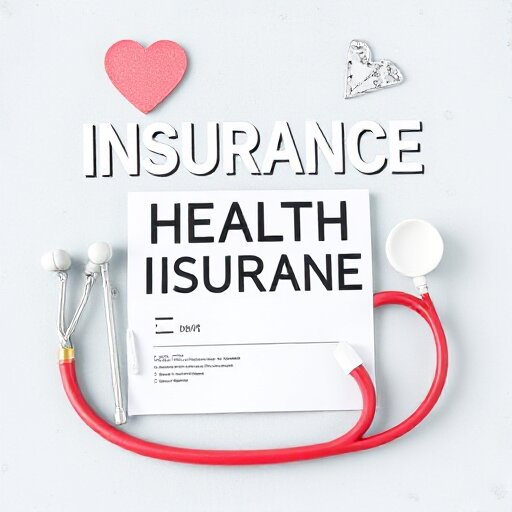When it comes to health insurance, many people focus primarily on medical coverage, often overlooking the importance of dental and vision care. However, dental and vision health are crucial components of overall well-being. In this blog, we’ll explore the role of dental and vision Coverage in Health Insurance coverage in health insurance plans, the benefits they provide, and what you should consider when selecting a plan.
Understanding Dental Coverage
Dental insurance is designed to help cover the costs associated with dental care, including routine check-ups, cleanings, and necessary treatments. Here are some key features of dental coverage:
1. Types of Dental Plans
Dental insurance typically comes in two main types:https://estep.xyz/?p=268
- Preventive Plans: These plans cover routine services such as cleanings, exams, and X-rays at little to no cost. Preventive care is essential for maintaining oral health and preventing more serious issues down the line.
- Comprehensive Plans: In addition to preventive care, comprehensive dental plans cover a wider range of services, including fillings, crowns, root canals, and orthodontics. These plans often have a higher premium but provide more extensive coverage.
2. Cost Structure
Dental insurance plans usually have a cost structure that includes:
- Premiums: The monthly fee you pay for coverage.
- Deductibles: The amount you must pay out-of-pocket before your insurance kicks in.
- Copayments and Coinsurance: The portion of the cost you are responsible for after meeting your deductible.
3. Network Providers
Many dental insurance plans operate on a network basis, meaning you’ll pay less if you use in-network providers. It’s essential to check if your preferred dentist is in the plan’s network to maximize your benefits.
Understanding Vision Coverage
Vision insurance helps cover the costs associated with eye care, including eye exams, glasses, and contact lenses. Here’s what you need to know about vision coverage:
1. Types of Vision Plans
Vision insurance typically includes two main types of coverage:
- Routine Vision Plans: These plans cover annual eye exams and may provide discounts on glasses and contact lenses. They are designed to help maintain eye health and detect issues early.
- Comprehensive Vision Plans: In addition to routine exams, comprehensive plans may cover a broader range of services, including treatment for eye diseases and surgeries like LASIK.
2. Cost Structure
Similar to dental insurance, vision plans have a cost structure that includes:
- Premiums: The monthly fee for coverage.
- Deductibles: The amount you must pay before your insurance covers any services.
- Copayments and Coinsurance: The portion of costs you are responsible for after meeting your deductible.
3. Network Providers
Vision insurance plans often have a network of eye care providers. Using in-network providers can help you save on out-of-pocket costs, so it’s important to verify your provider’s network status.
The Importance of Dental and Vision Coverage
1. Preventive Care
Both dental and vision insurance emphasize preventive care, which is essential for maintaining overall health. Regular check-ups can help detect issues early, preventing more serious and costly problems down the line.
2. Cost Savings
Dental and vision care can be expensive, especially if you require extensive treatments or corrective lenses. Having insurance coverage can significantly reduce your out-of-pocket expenses, making it more affordable to access necessary care.
3. Overall Health Connection
Oral health and eye health are closely linked to overall health. Poor dental hygiene can lead to systemic health issues, while untreated vision problems can affect daily activities and quality of life. Comprehensive coverage ensures that you can prioritize both dental and vision care.
Choosing the Right Plan
When selecting a health insurance plan, consider the following factors regarding dental and vision coverage:
- Assess Your Needs: Evaluate your dental and vision health needs. If you have specific conditions or require regular treatments, look for plans that offer comprehensive coverage.
- Check Provider Networks: Ensure that your preferred dental and vision providers are in-network to maximize your benefits and minimize costs.
- Review Costs: Compare premiums, deductibles, and out-of-pocket costs for different plans. Consider how often you use dental and vision services to determine the best value.
- Understand Coverage Limits: Be aware of any limits on coverage, such as annual maximums for dental benefits or restrictions on the number of eye exams per year.
Conclusion
Dental and vision coverage are essential components of a comprehensive health insurance plan. By understanding the benefits of these coverages and how they work, you can make informed decisions about your healthcare needs. Prioritizing dental and vision health not only enhances your overall well-being but also helps you avoid costly treatments in the future. When selecting a health insurance plan, be sure to consider the importance of dental and vision coverage to ensure you receive the care you need.
By optimizing this blog for SEO, we can help ensure that it reaches a wider audience seeking information on dental and vision coverage in health insurance plans. Use relevant keywords such as “dental insurance,” “vision insurance,” “health insurance plans,” “preventive care,” and
